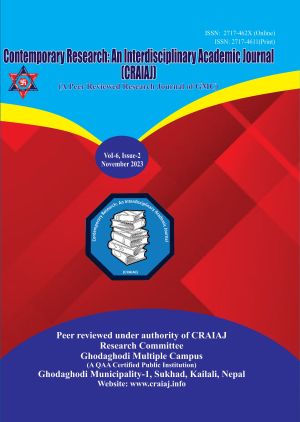Original Gītā: The Mouthpiece of Indian Territorial Slave States
DOI:
https://doi.org/10.3126/craiaj.v6i2.60278Keywords:
Gaṇa-Saṁghas, Kula dharma, Primitive commune, slavery, VarnaAbstract
This article attempts to contextualize the original part of the Bhagavad Gītā. The study observes the total 85 verses up to 2.38 of the Gītā as the original one, which deals with the question of war. The study has relevance as it informs the reader of the dominant ideology of the time when the text was produced. The article addresses on the research problems concerning the basic ideology or dharma of the original Gītā and its indication of the time when the text was set. In order to contextualize the original Gītā, the historical background and textual properties of this part will be analyzed by applying the methodological tool of the Marxist concept of historical materialism. Historical materialism analyzes any text as a literary production that reflects the social and economic base of a particular society. The study reveals that the original Gītā carries the dominant ideology or dharma as the human greed for wealth, power, and prosperity of the new territorial slave states based on private property and classes. The original Gītā, thus, is found to be set at a time when Indian slavery was on the rise overthrowing the primitive commune of Aryan Gaṇa-Saṁghas.
Downloads
Downloads
Published
How to Cite
Issue
Section
License
Copyright (c) 2023 Ghodaghodi Multiple Campus, CRAIAJ

This work is licensed under a Creative Commons Attribution-NonCommercial-NoDerivatives 4.0 International License.
© Ghodaghodi Multiple Campus, Research Committee, RMC

This work is licensed under a Creative Commons Attribution-NonCommercial-NoDerivatives 4.0 International License. This license enables reusers to copy and distribute the material in any medium or format in unadapted form only, for noncommercial purposes only, and only so long as attribution is given to the creator.




